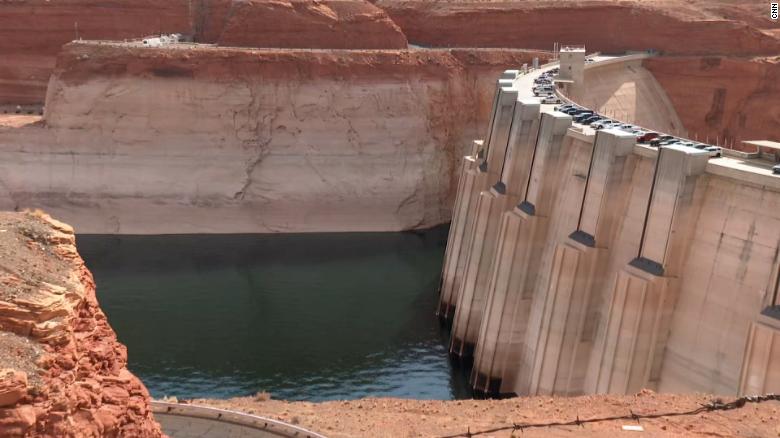Drought worsens in this region of the US 0:38
(CNN) --
Lake Powell, the second largest dam in the United States, is running dry.
The situation is critical: if the water levels in the lake drop another 9 meters, all hydroelectric production at the Glen Canyon dam would stop.
The climate change-induced water crisis in the West is now causing a potential energy crisis for millions of people in the Southwest who depend on the dam for energy.
In recent years, the Glen Canyon Dam has lost about 16% of its capacity to generate power.
Water levels in Lake Powell have dropped about 100 feet in the last three years.
Climate change is coming for our coffee
Bob Martin, deputy director of power for Glen Canyon Dam, pointed out what's called the "bathtub ring" in the canyon walls.
The kilometers of white rock represent the problem of this region.
"That's where the water has whitened the rock, and that's how high the water was at one point," Martin told CNN.
advertising
As water levels decline, so does hydroelectric power production.
The dam harnesses the gravitational pull of Colorado River water to generate power for up to 5.8 million homes and businesses in seven states, including Nevada and New Mexico.
Bryan Hill runs the public power company in Page, Arizona, where the federal dam is located, and compares the situation to doomsday.
"We are knocking on the door of judgment day, judgment day is when we have no water to give anyone."
As water levels in Lake Powell decline, so does hydroelectric power production.
40% of Page's power comes from the Glen Canyon Dam.
Without it, they will be forced to offset that electricity with fossil fuels like natural gas, which emit gases that warm the planet and will exacerbate the water crisis in the West.
The loss of power at the dam would also mean higher energy costs for customers as the price of fossil fuels soars.
"If nothing changes, in other words, if we don't start getting some moisture for Page, in particular, we're looking at an additional 25% to 30% in energy costs," Hill told CNN.
Arash Moalemi, deputy general manager of the Navajo Tribe Utilities Authority, told CNN that a loss of power at the Glen Canyon Dam would be devastating to the Navajo community.
“We have 40% unemployment and our per capita income is a little over $10,000,” Moalemi said.
"Higher energy prices could mean some people can't heat or cool their homes."
The US economy contracted.
There's no reason to panic
The federal government, which technically owns the hydroelectric power that flows through federally run dams, sells the electricity to the states for what is typically much less than the commercial market price.
In a worst-case scenario, the Interior Department projects the dam could stop producing power in January.
The agency is now weighing an emergency action that would buy the dam more time.
If the water level drops another 9 meters, the Glen Canyon Dam will no longer produce electricity.
In a letter to seven Western states this month, the Interior Department recommended releasing less Lake Powell water to downstream states this year.
The proposal calls for retaining the equivalent of 42.6 billion gallons of water in Lake Powell, which will mean deeper cuts in the amount of water people can use in Arizona, California, Colorado, Nevada, New Mexico, Utah and Wyoming.
More than 110 billion gallons of water have already been retained so far this year.
This impossible choice comes as new images show that Lake Mead, Powell's downstream neighbor and the nation's largest dam, has fallen to levels so historically low that one of the lake's original water intake valves from 1971 is now it is exposed above the water line.
Inside the Glen Canyon Dam, the current water level still produces power.
In the power plant of the dam there are eight generators.
The force of the water traveling through 4 meter diameter pipes hits and spins turbines which then generate power.
If water levels in Lake Powell drop just another 30 feet, those generators will stop spinning.
The climate crisis is forcing the federal and state government to make tough decisions and take drastic measures just to keep power and water flowing for Americans in the Southwest.
The Department of the Interior is expected to make a final decision on how to handle the dire situation at the dam in early May.

